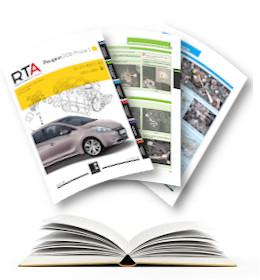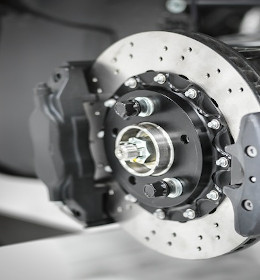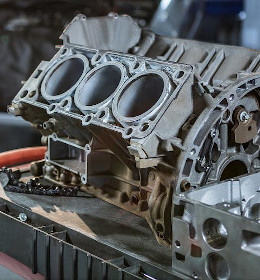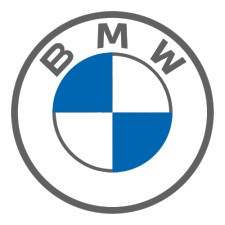Que signifie votre code Code Défaut BMW ?
Grace au système OBD, les
Bmw
fabriqués après 1996 sont normalement équipés d'une prise diagnostique OBD.
Si l'ordinateur de la voiture rencontre un problème,un code d'erreur ou un code de diagnostic (DTC)
sera stocké dans la mémoire de l'ECU de la voiture.
Avec un lecteur OBD branché sur le port OBD (On-Board Diagnostics) de la voiture, vous pouvez lire la liste des codes stockés, et donc découvrir quel est le problème.
Les codes suivent une formule permettant de savoir généralement quel est le problème avant même de regarder le tableau ci-dessous.
Nous vous présentons ci-dessus une liste très complète des différents codes défauts possibles.
Si le code défaut de votre auto s'affiche au tableau de bord, vous n'aurez peut-être même pas besoin d'un lecteur OBD . il sera dans la liste .
Réparer le code défaut de votre auto, c'est potentiellement simple à faire avec vos revues et méthodes techniques.

Réparer le code défaut de votre auto, c’est potentiellement simple à faire avec nos revues et méthodes techniques
| Code | Libellé |
|---|---|
| P10F7 | Fuel Rail Pressure Sensor Pressure High (Bank 2) |
| P10F8 | Fuel Rail Pressure Sensor Pressure Low (Bank 2) |
| P10F9 | O2 Sensor Heating, Heater Error (Bank 2 Sensor 1) |
| P1100 | O2 Sensor Circuit Slow Response after Coast Down Fuel Cut-Off (Bank1 Sensor 1) (S62: Air Mass Flow Sensor Circuit High) |
| P1101 | O2 Sensor Circuit Slow Response after Coast Down Fuel Cut-Off (Bank2 Sensor 1) |
| P1104 | Differential Pressure Sensor Intake Manifold Pressure Too Low (Bank1) |
| P1105 | Differential Pressure Sensor Intake Manifold Pressure Too High (Bank 1) |
| P1106 | Manifold Air Pressure Too Low at Engine Stop |
| P1107 | Manifold Air Pressure Too Low at Idle Engine Running |
| P1108 | Manifold Air Pressure Too Low at Full Load for Low Engine Speed |
| P1109 | Manifold Air Pressure Too High in Deceleration |
| P110A | Differential Pressure Sensor Intake Manifold Pressure Too Low (Bank2) |
| P110B | Differential Pressure Sensor Intake Manifold Pressure Too High (Bank 2) |
| P110D | Throttle Position Sensor A and B Circuit Range/Performance (Bank 1) |
| P110F | Ambient Air Temperature Sensor Faulty CAN Signal |
| P1111 | Coolant temperature sensor 2 circuit low |
| P1112 | Coolant temperature sensor 2 circuit high |
| P1114 | O2 Sensor Signal Circuit Slow Switching from Lean to Rich (Bank 2 Sensor 1) |
| P1115 | Coolant temperature sensor circuit range/performance |
| P1116 | Mass airflow meter 2 circuit range/performance |
| P1117 | Mass airflow meter 2 circuit low |
| P1118 | Mass airflow meter 2 circuit high |
| P1119 | O2 Sensor Signal Circuit Slow Switching from Lean to Rich (Bank 1 Sensor 1) |
| P111A | Mass or Volume Air Flow via O2 Sensor Too High (Bank 1) |
| P111B | Mass or Volume Air Flow via O2 Sensor Too Low (Bank 1) |
| P111C | Mass or Volume Air Flow via O2 Sensor Too High (Bank 2) |
| P111D | Mass or Volume Air Flow via O2 Sensor Too Low (Bank 2) |
| P111E | Intake Air Temperature Sensor 1 Maximum Temperature Implausible (Bank 1) |
| P111F | Intake Air Temperature Sensor 1 Minimum Temperature Implausible (Bank 1) |
| P1120 | Accelerator pedal position sensor 1 circuit/open |
| P1121 | Accelerator pedal position sensor 1, implausible signal |
| P1122 | Accelerator pedal position sensor 1 circuit low |
| P1123 | Accelerator pedal position sensor 1 circuit high |
| P1124 | Differential Pressure Sensor Intake Manifold Offset (Bank 1) |
| P1125 | Throttle Position Sensor A and B Circuit Range/Performance Small Error |
| P1126 | Throttle Position Sensor A and B Circuit Range/Performance Large Error |
| P1127 | Engine Oil Level Sensor Signal Plausibility |
| P1128 | Engine Oil Level Sensor No Signal |
| P1129 | Engine Oil Level Sensor Signal Oil Level Too Low |
| P112A | Engine Coolant Temperature Sensor 1 Maximum Temperature Implausible |
| P112B | Engine Coolant Temperature Too Low |
| P112C | O2 Sensor Negative Current or Positive Current Control Circuit/Open(Bank 1 Sensor 1) |
| P112D | O2 Sensor Negative Current or Positive Current Control Circuit/Open(Bank 2 Sensor 1) |
| P112E | Manifold Absolute Pressure to Throttle Angle - Too Low (Bank 1) |
| P112F | Manifold Absolute Pressure to Throttle Angle - Too High (Bank 1) |
| P1130 | O2 Sensor Circuit Dynamic Test (Bank 1 Sensor 2) |
| P1131 | O2 Sensor Circuit Dynamic Test (Bank 2 Sensor 2) |
| P1132 | Oxygen sensor in front of catalytic converter 1, heating circuit/open |
| P1133 | Oxygen sensor in front of catalytic converter 2, heating circuit/open |
| P1134 | Oxygen sensor in front of catalytic converter 1, heating circuit signal intermittent |
| P1135 | Oxygen sensor in front of catalytic converter 1, heating control circuit low |
| P1136 | Oxygen sensor in front of catalytic converter 1, heating control circuit high |
| P1137 | Oxygen sensor behind catalytic converter 1, heating circuit signal intermittent |
| P1138 | Oxygen sensor behind catalytic converter 1, heating control circuit low |
| P1139 | Oxygen sensor behind catalytic converter 1, heating control circuit high |
| P113A | Mass or Volume Air Flow 1 Correction Signal Plausibility Period TooLong |
| P113B | Mass or Volume Air Flow 1 Correction Signal Plausibility Period TooShort |
| P113E | Barometric Pressure 'B' Too Low |
| P113F | Engine Coolant Temperature Sensor 1 Shunt |
| P1140 | Mass or Volume Air Flow Circuit Range/Performance Problem |
| P1141 | Value Comparison Throttle Position Sensor 1 / Hot Film Air Mass Meter (Bank 1) |
| P1142 | Value Comparison Throttle Position Sensor 2 / Hot Film Air Mass Meter (Bank 2) |
| P1143 | O2 Sensor Activity Check Signal Too High (Bank 1 Sensor 2) |
| P1144 | O2 Sensor Activity Check Signal Too Low (Bank 1 Sensor 2) |
| P1145 | Running losses control circuit solenoid electrical fault |
| P1149 | O2 Sensor Avtivity Check Signal Too High (Bank 2 Sensor 2) |
| P114A | Post Catalyst Fuel Trim Via Oxygen Sensor System Too Rich (Bank 1) |
| P114B | Post Catalyst Fuel Trim Via Oxygen Sensor System Too Lean (Bank 1) |
| P114C | Post Catalyst Fuel Trim Via Oxygen Sensor System Too Rich (Bank 2) |
| P114D | Post Catalyst Fuel Trim Via Oxygen Sensor System Too Lean (Bank 2) |
| P1150 | O2 Sensor Activity Check Signal Too Low (Bank 2 Sensor 2) |
| P1151 | Oxygen sensor in front of catalytic converter 2, heating circuit signal intermittent |
| P1152 | Oxygen sensor in front of catalytic converter 2, heating control circuit low |
| P1153 | Oxygen sensor in front of catalytic converter 2, heating control circuit high |
| P1154 | Differential Pressure Sensor Intake Manifold Circuit High (Bank 2) |
| P1155 | Oxygen sensor behind catalytic converter 2, heating circuit signal intermittent |
| P1156 | Oxygen sensor behind catalytic converter 2, heating control circuit low |
| P1157 | Oxygen sensor behind catalytic converter 2, heating control circuit high |
| P1158 | Short-term fuel trim, minimum value (bank 1) |
| P1159 | Short-term fuel trim, maximum value (bank 1) |
| P115A | Mass or Volume Air Flow 'A' Maximum Exceeded |
| P115B | Mass or Volume Air Flow 'A' Minimum Fallen Below |
| P115C | Mass or Volume Air Flow 'A' Air Mass Too Low Compared to Model |
| P115D | Mass or Volume Air Flow 'A' Air Mass Too High Compared to Model |
| P115F | Throttle/Pedal Position Sensor/Switch 'A' / 'B' Synchronous Operation Correlation (Bank 1) |
| P1160 | Short-term fuel trim, minimum value (bank 2) |
| P1161 | Oil temperature sensor circuit/open |
| P1161 | Short-term fuel trim, maximum value (bank 2) |
| P1162 | Value Comparison Throttle Position Sensor 2 / Hot Film Air Mass Meter (Bank 1) |
| P1162 | Fuel trim adaptation, low additive per ignition (bank 1) |
| P1163 | Fuel trim adaptation, high additive per ignition (bank 1) |
| P1163 | Value Comparison Throttle Position Sensor 1 / Hot Film Air Mass Meter (Bank 2) |
| P1164 | Barometric Pressure 'B' Too High |
| P1164 | Fuel trim adaptation, low additive per ignition (bank 2) |
| P1165 | Cold Start Charge Air Temperature Too Low (Bank 2) |
| P1165 | Fuel trim adaptation, high additive per ignition (bank 2) |
| P1166 | Oxygen Sensors Swapped |
| P1167 | HO2S Heater Coupling Signal Too High (Bank 1 Sensor 1) |
| P1168 | Post Catalyst Fuel Trim System Correction Value above Threshold (Bank 1) |
| P1169 | HO2S Heater Coupling Signal Too High (Bank 2 Sensor 1) |
DEFINISSEZ VOTRE MARQUE POUR ACCEDER A VOS CODES DEFAUTS
-
Revue technique RTA

Revue Technique Automobile
La revue technique de référence depuis 1946. La RTA est une revue papier pour tous publics, qui vous permet d'effectuer les petites et les grosses réparations
 Voir le descriptif
Voir le descriptif
-
Entretien courant MTA

Méthode Technique Automobile
La MTA est issue de nos outils destinés aux pros de l'auto. Ces méthodes en ligne permettent d'effectuer les opérations de maintenances de votre auto (filtres, courroies, etc.)
 Voir le descriptif
Voir le descriptif
-
Toutes réparations MTAx

Méthode Technique Automobile Expert
La MTA expert est un outil en ligne destiné aux experts en mécanique et en carrosserie, pour effectuer tous types de réparations sur une voiture.
 Voir le descriptif
Voir le descriptif















